North Korea. Part III. Visual CultureMapApril 28 — May 6, Juche year 95 (2006) “In late 1950, American troops used a cunning method to disperse smallpox and other infectious disease agents in the northern part of Korea. In the period from January to March 1952 alone, there were over 700 incidents where Americans dropped bacteriological bombs and various objects contaminated with deadly bacteria onto more than 400 sites in northern Korea. They contained mice, flies, mosquitoes, fleas, spiders, and others infected with plague, cholera, typhoid, paratyphoid, and various infectious diseases.” The most recent issue of Korea magazine from April 2006 (№ 595). By the way, the creative team of Korea magazine has gotten its hands on a copy of Photoshop and is using it to correct various shortcomings of reality: erasing people, painting in lawns, smoothing out roads. Except they’re doing it badly. Here, for example, an unknown retoucher is blatantly damaging the country’s reputation by leaving marks with the Clone Stamp tool (№ 594, March 2006): 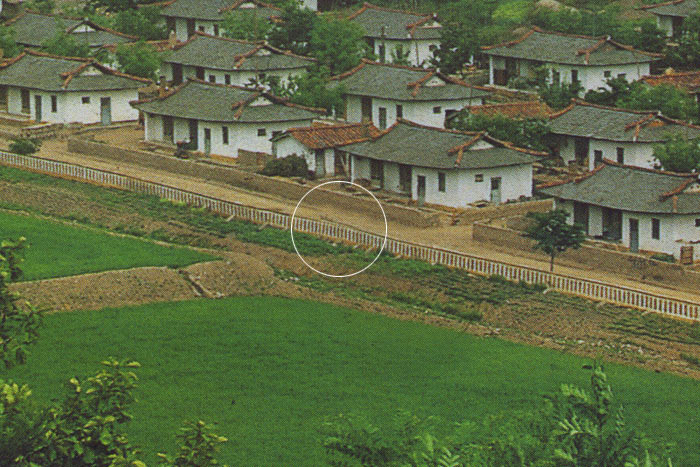 A room with modern video games has been set up at the country’s showcase summer camp (which also has an escalator leading up to the dorms—though it’s turned on only for tourists). 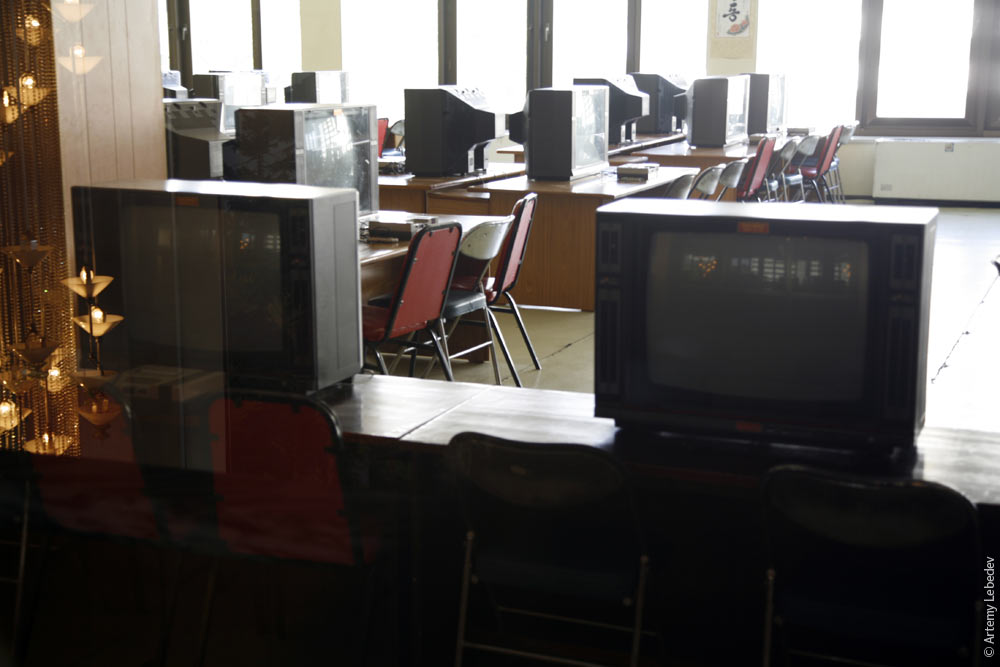 The graphic artist’s profession is a very important one in the DPRK. 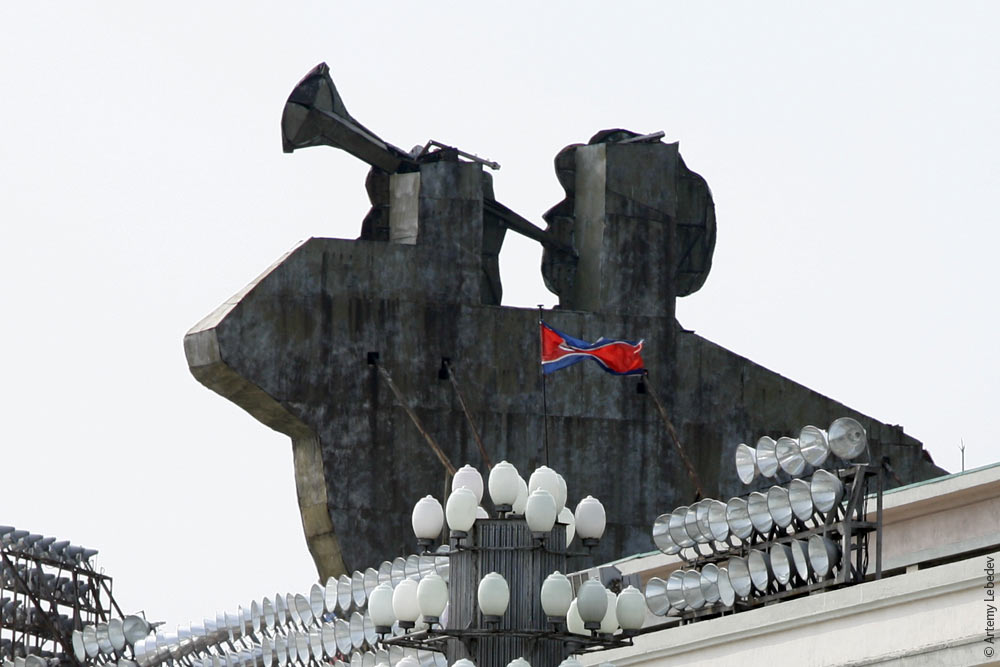 Billboards promoting cars jointly manufactured by South and North Korea are the only advertising here, and seen only in Pyongyang. I came across three billboards with different models during my stay.  Compositions featuring heroic representatives of various professions appear here and there. This piece is actually more of an exception because the soldier is in the background. 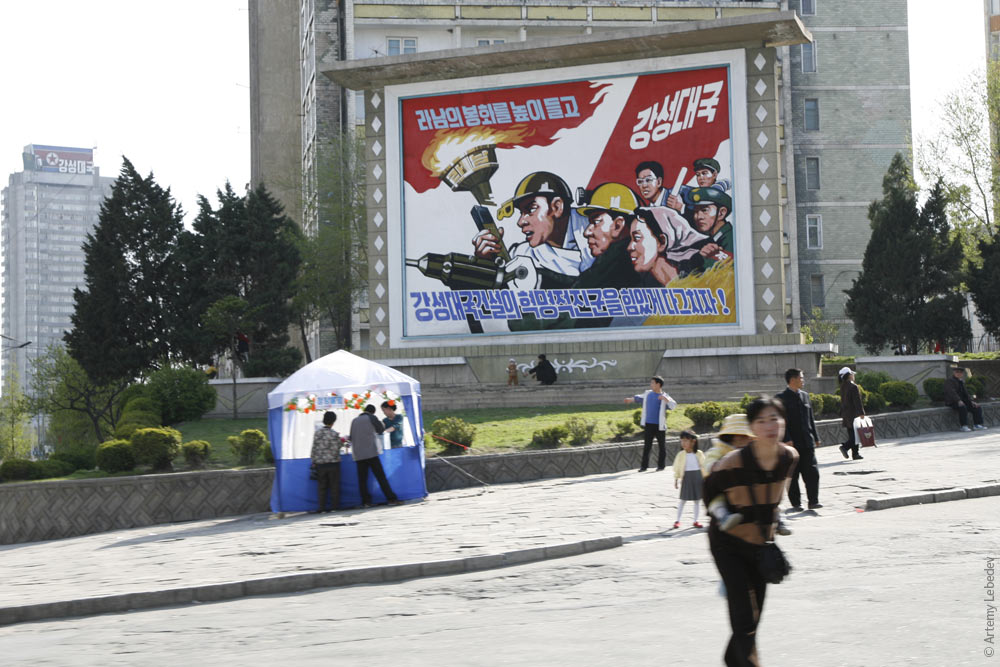 Usually the soldier is leading the others. 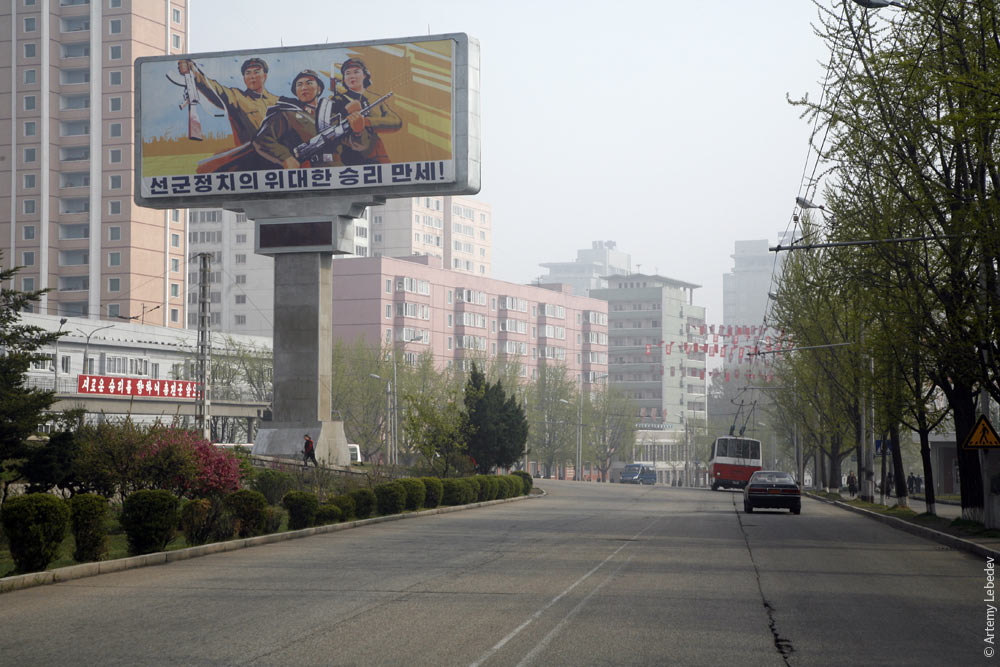 Inspirational billboards with Kim Il-sung (of various ages) promoting hard work and heroism are ubiquitous. 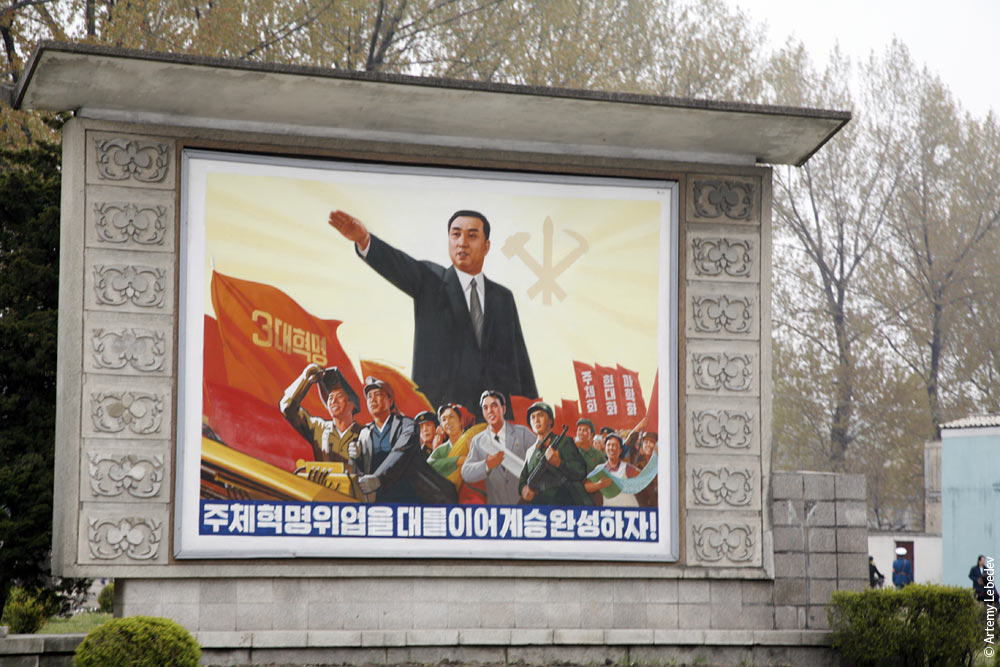 Mosaic panels imitating famous paintings are fairly common. For example: “Comrade Kim Jong-suk [Kim Il-sung’s wife—A. L.] risks her life to protect Great Leader Comrade Kim Il-sung.” But usually the Great Leader himself is depicted. 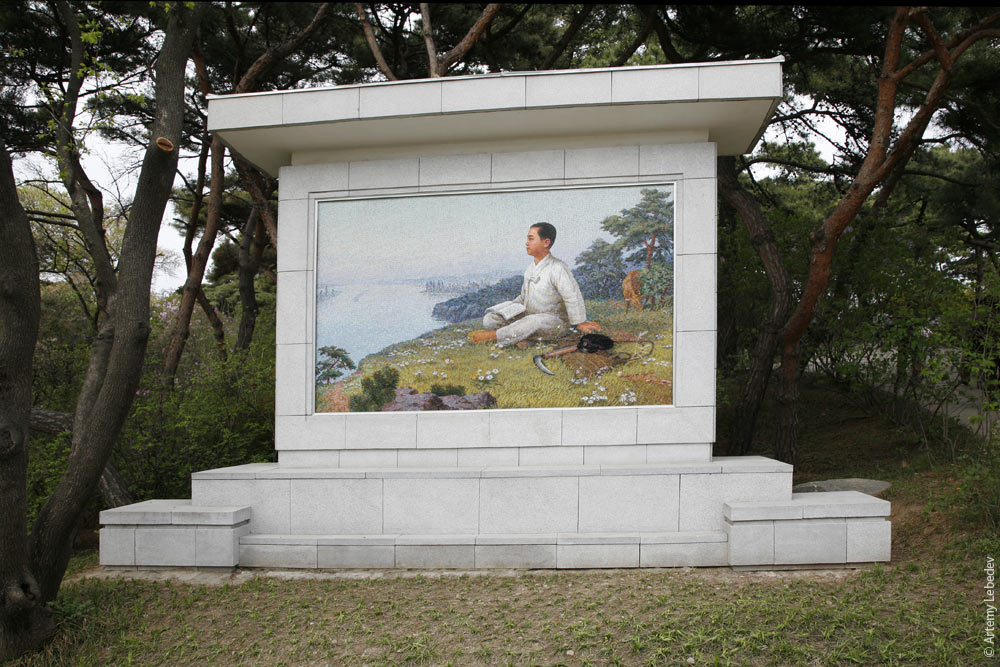 Large format printing doesn’t exist here yet, everything is painted by hand. 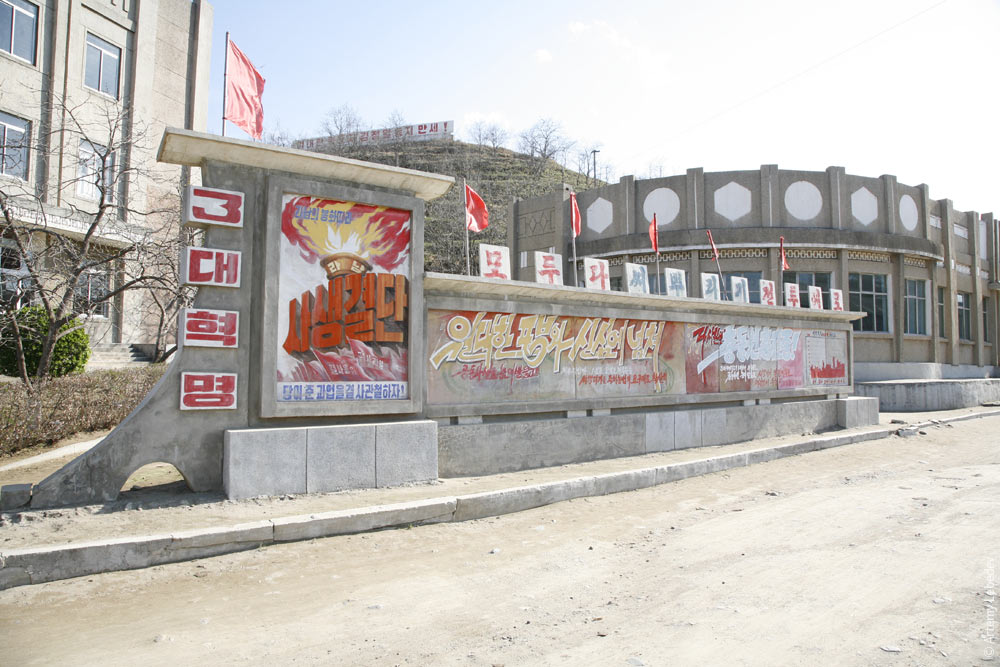 Sometimes it feels like it’s 1925. 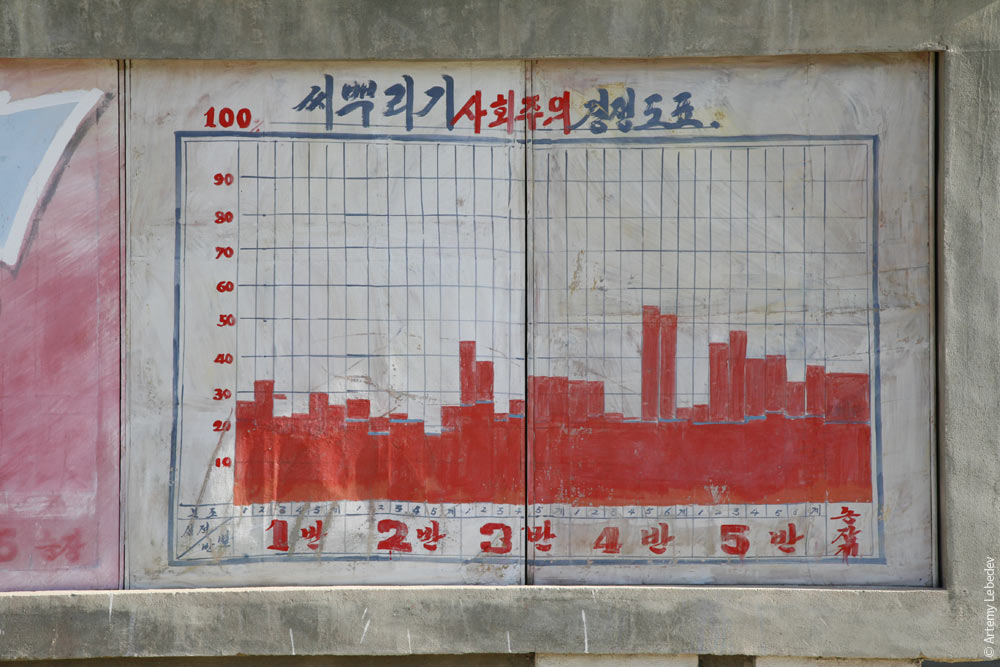 There are sculptures all over the place, from park-and-garden guerillas to bunnies denouncing littering. 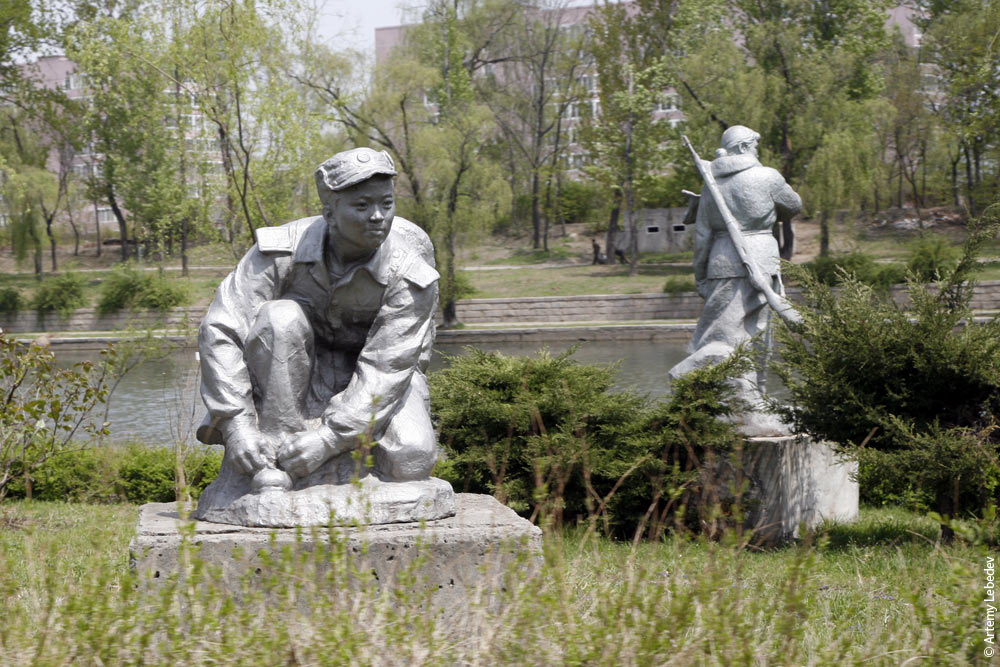 Bronze polished to a bright shine is often used for monuments. Here we have the worker, peasant, and intellectual holding up their implements to form the emblem of the Korean Workers’ Party. 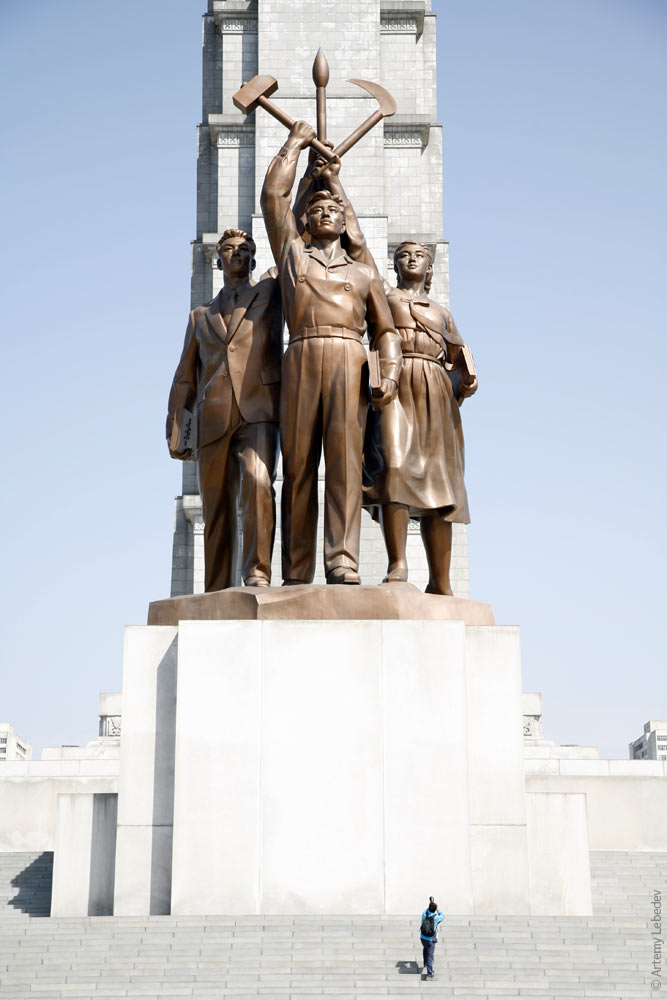 And this is one of the two sculptural compositions flanking the statue of Great Leader Comrade Kim Il-sung. 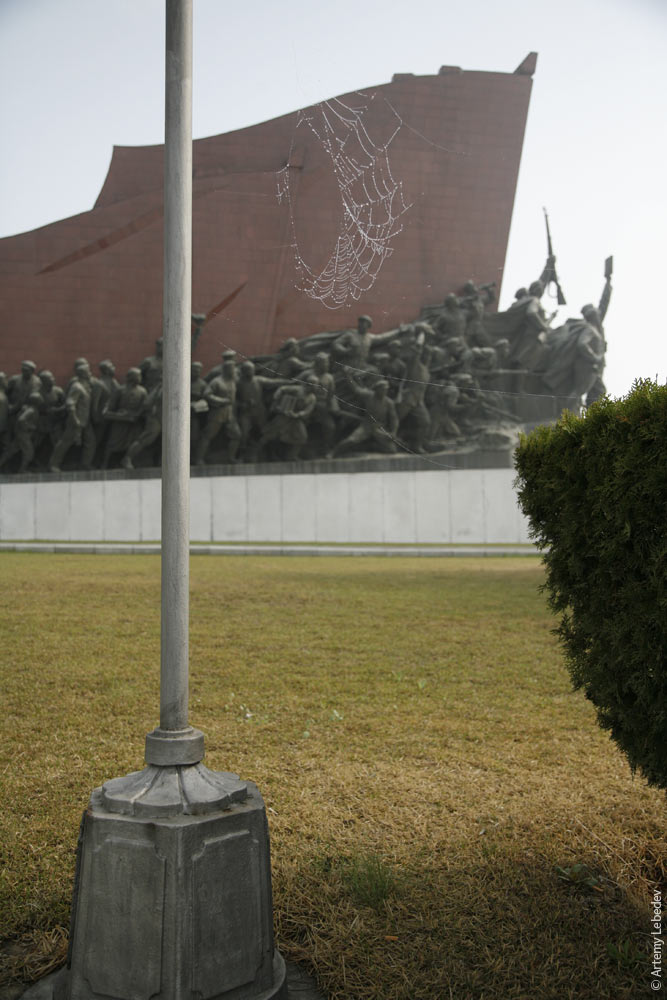 Every city and town has a mandatory stele with a proclamation or maxim from the Leader. 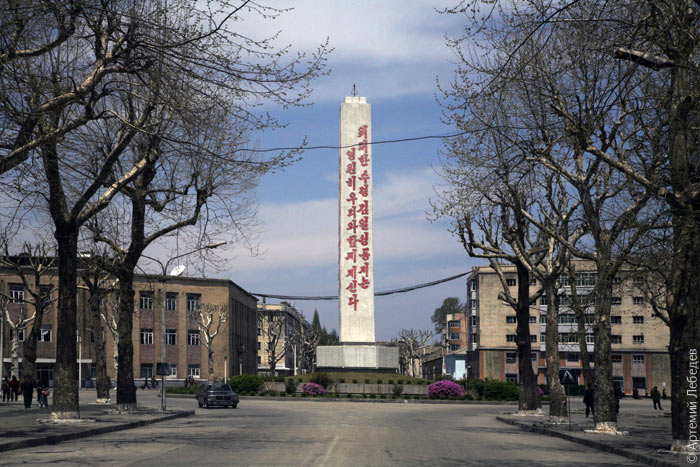 The sculptors’ workmanship runs the gamut of styles from Soviet realism to Soviet abomination. 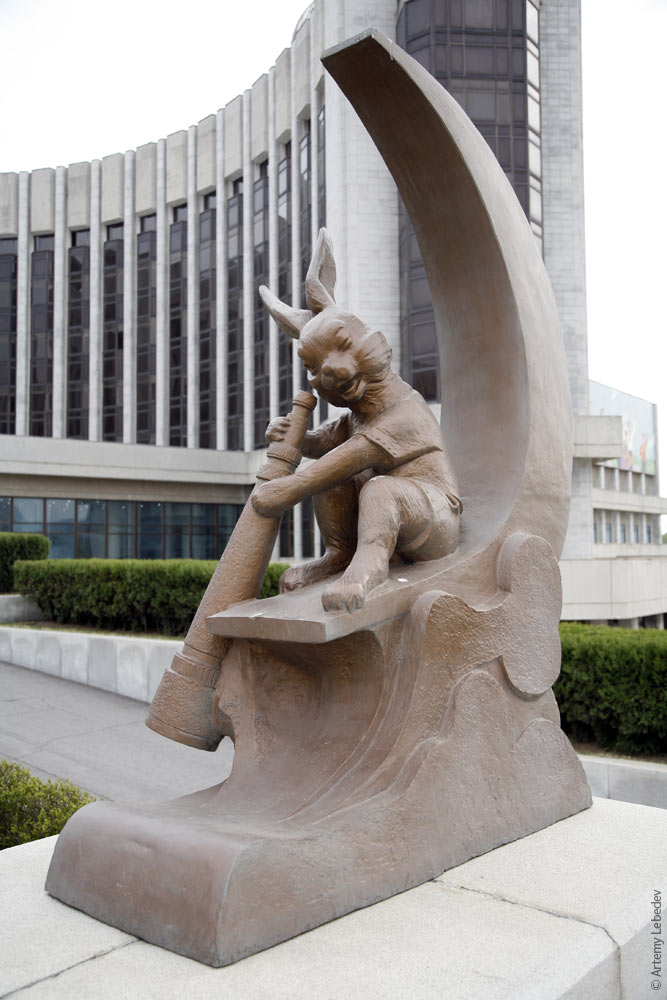 Areas designated for civilized leisure contain elaborately decorated trash cans. 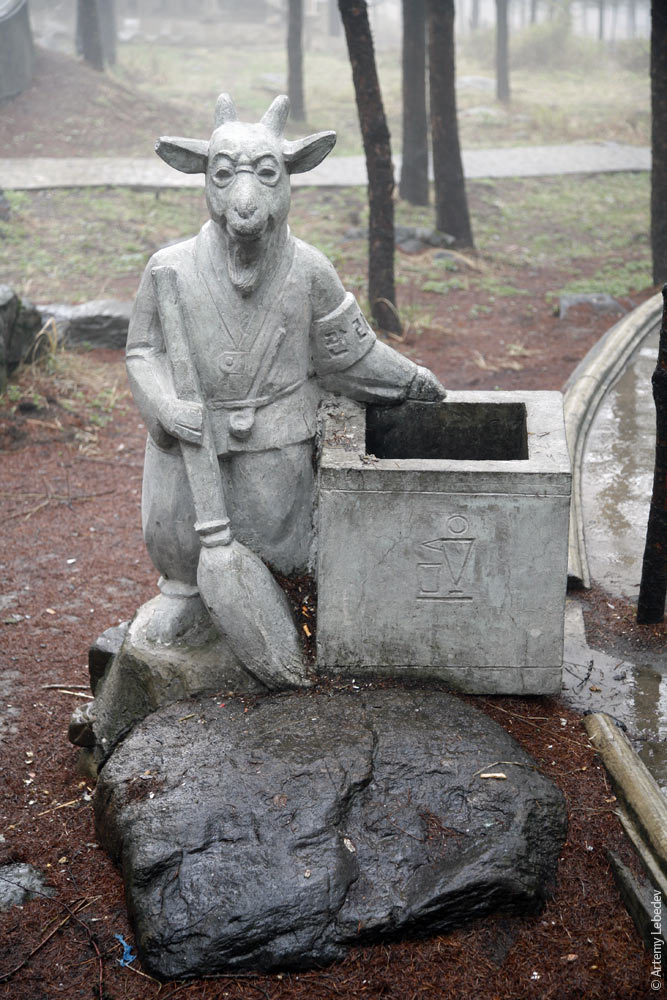 Oh hai guyz!  The number four is normal-looking on license plates, but has a local flavor everywhere else, including traffic signs (like in New Zealand or Malaysia). 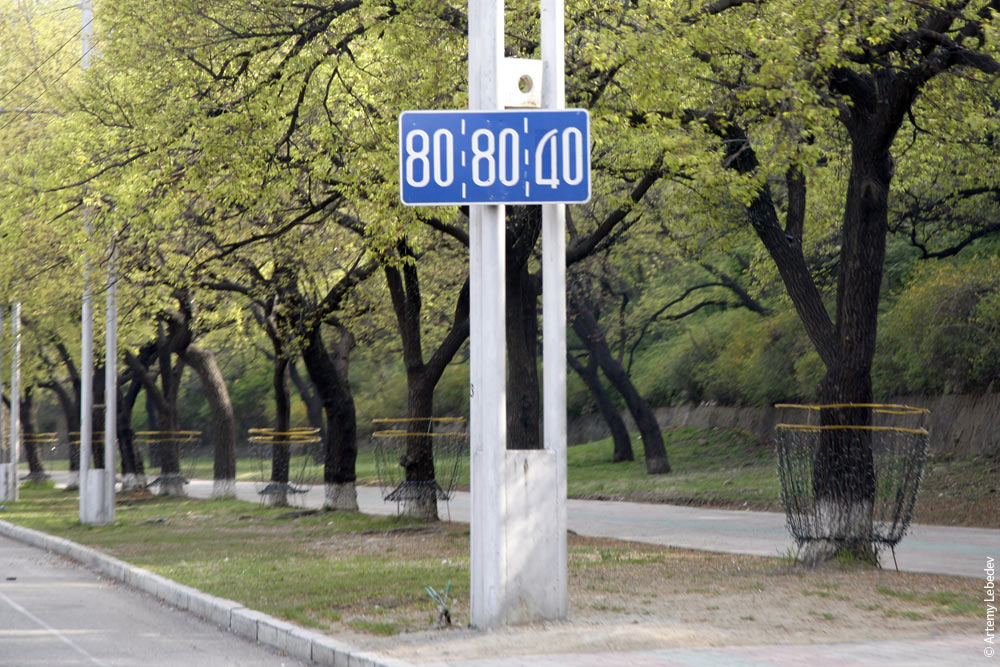 Every North Korean wears a lapel pin with an image of the Great Leader Comrade Kim Il-sung (I came across a few versions issued in different years). Only very young children don’t wear one. You also can’t see lapel pins on wait staff, they’re probably hidden under their jacket/apron. These pins cannot be purchased. The only person who doesn’t have one is Kim Il-sung himself (judging by the photographs). 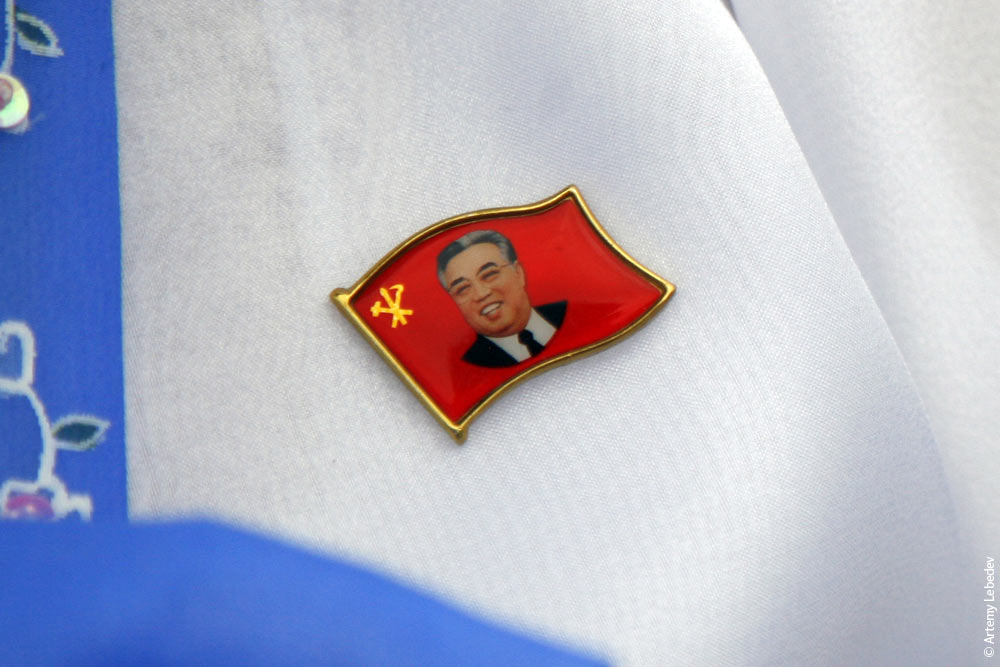 This sign means “shoe repair upstairs.” 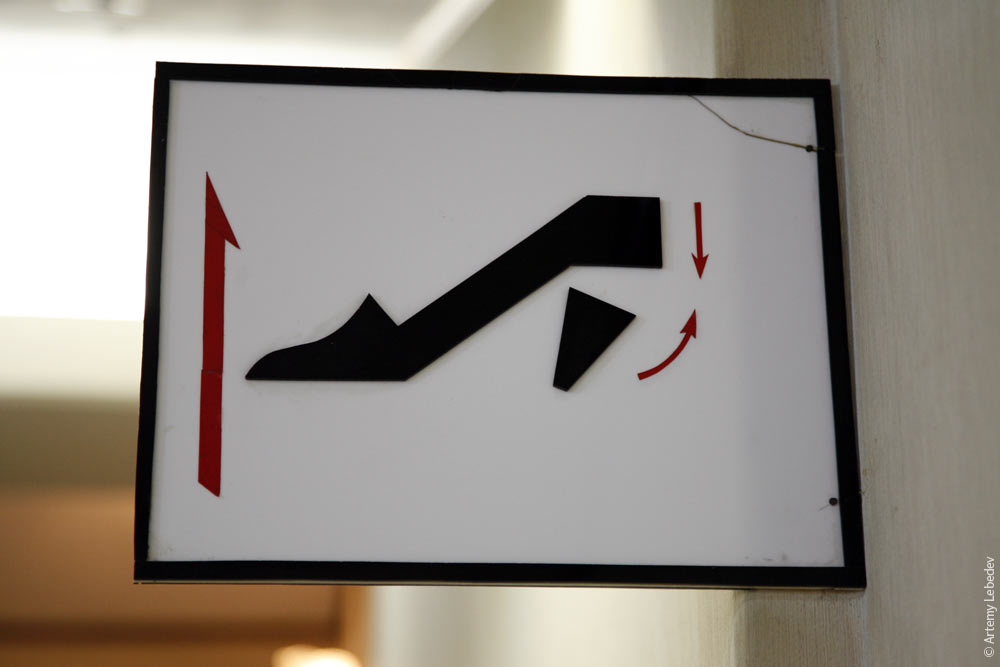 No smoking. First no, then smoking.  And this is a food services sign. China, by the way, has a fork and knife on their signs like we do. 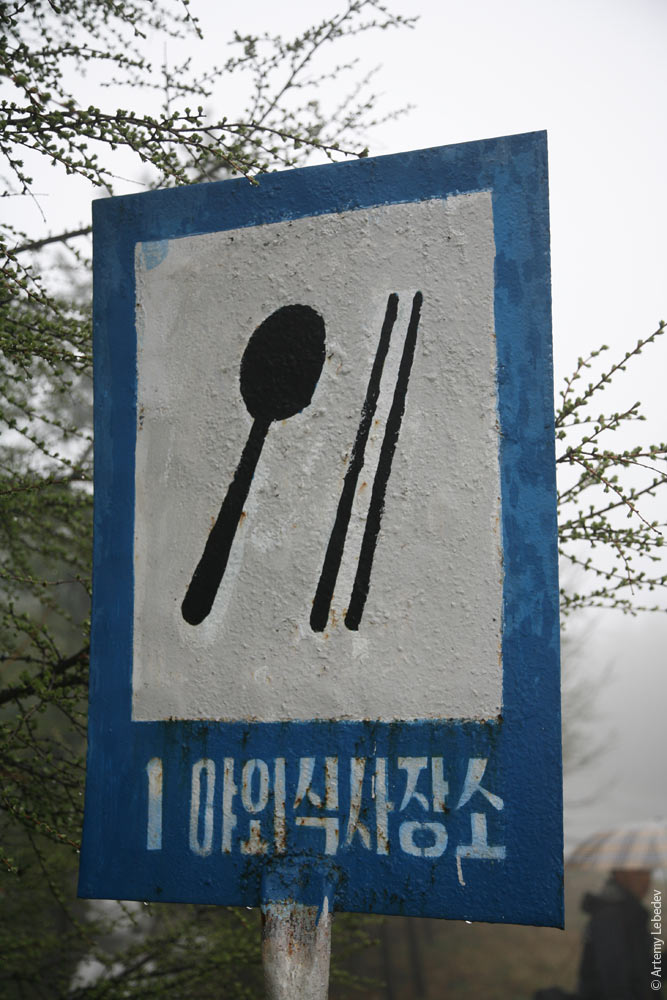 Doors inside buildings often have two pictograms on them. The X on the right means “no entry.” The thing (bullseye?) on the left means “entrance through this door.” 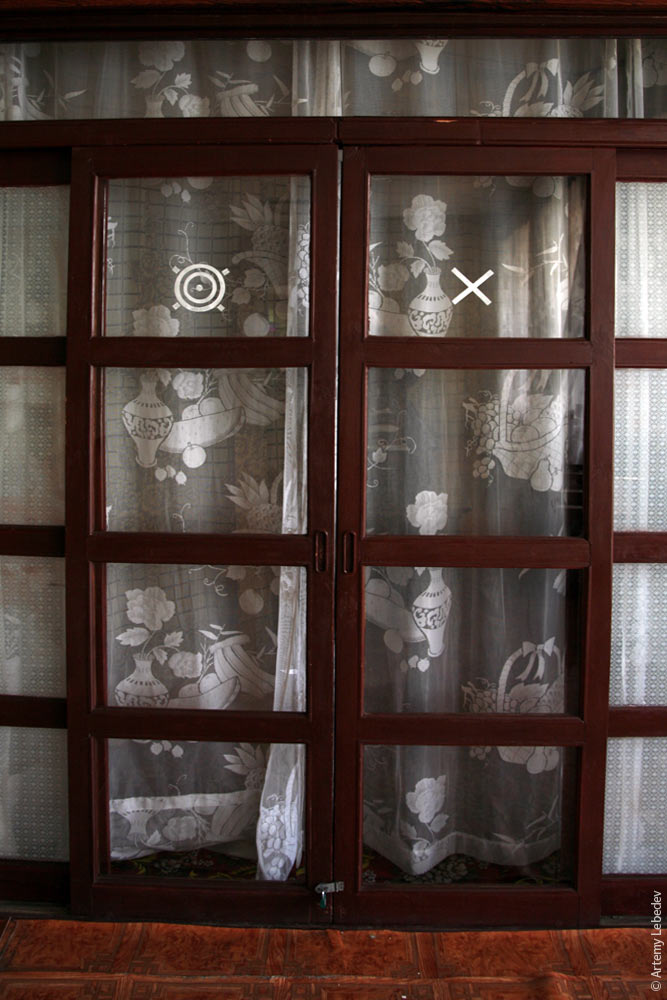 A service station sign. 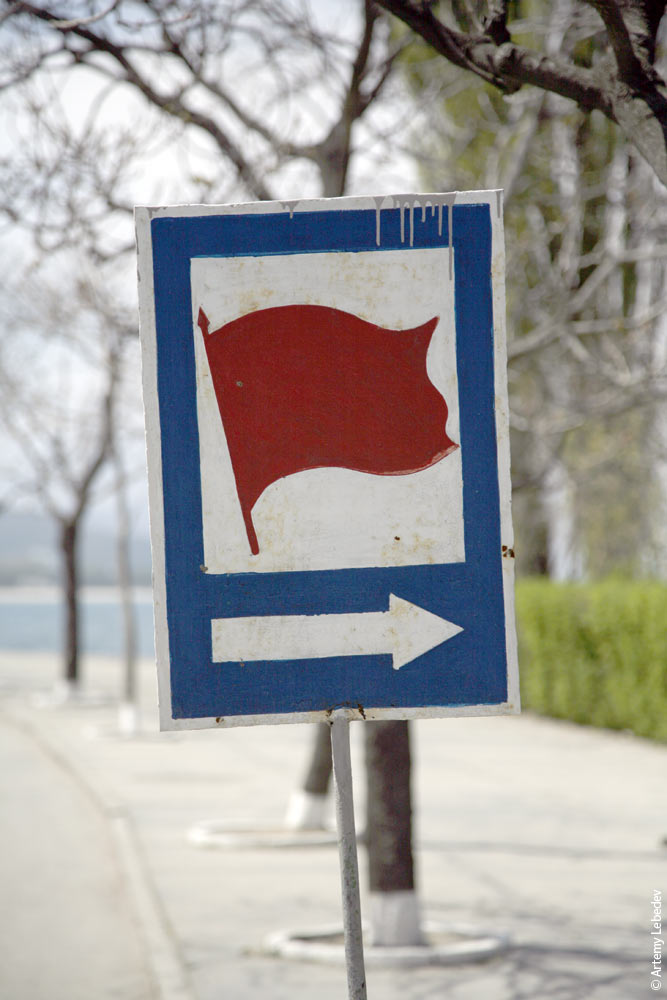 Underground pedestrian walkway. 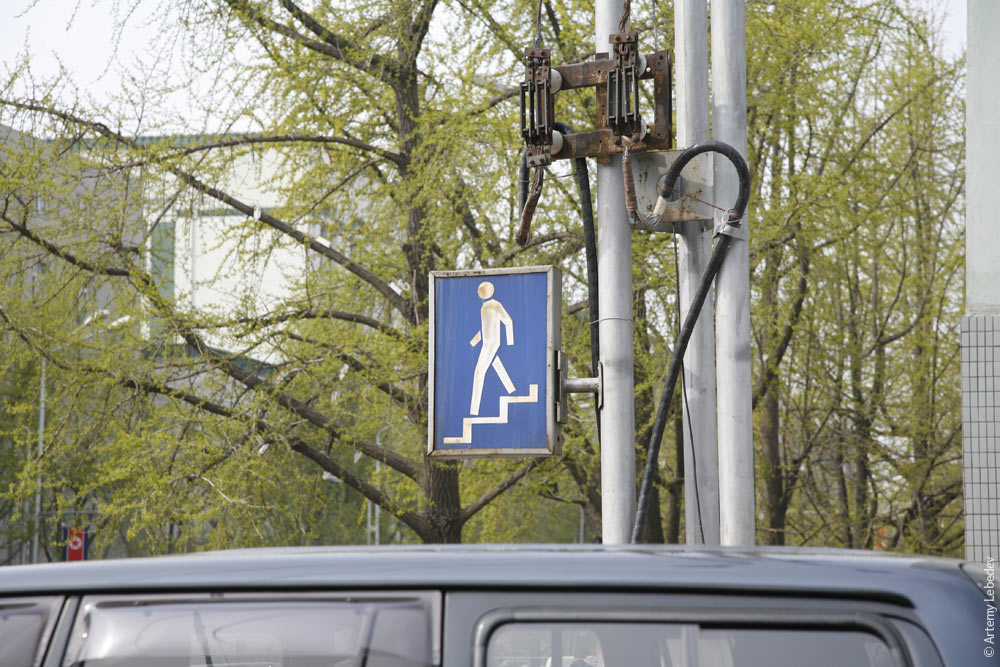 Crosswalk. 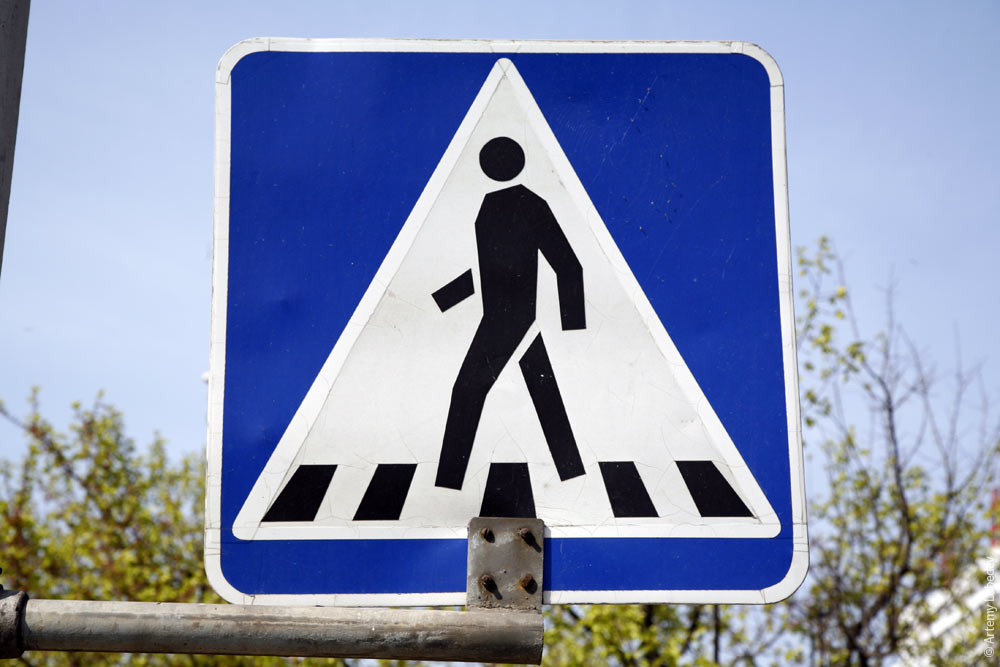 Railroad crossing. 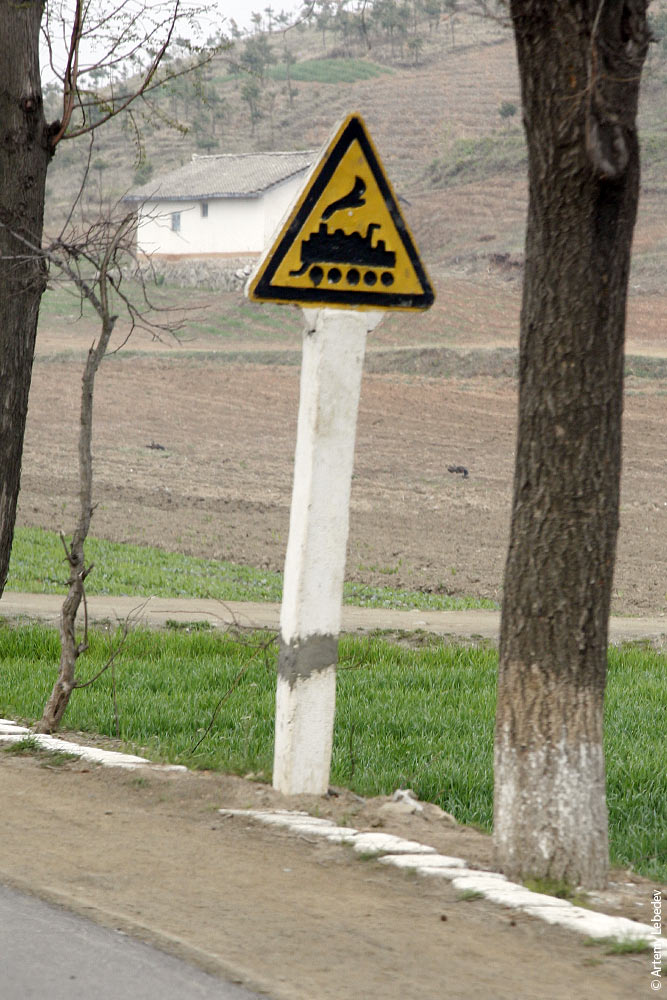 A mailbox. 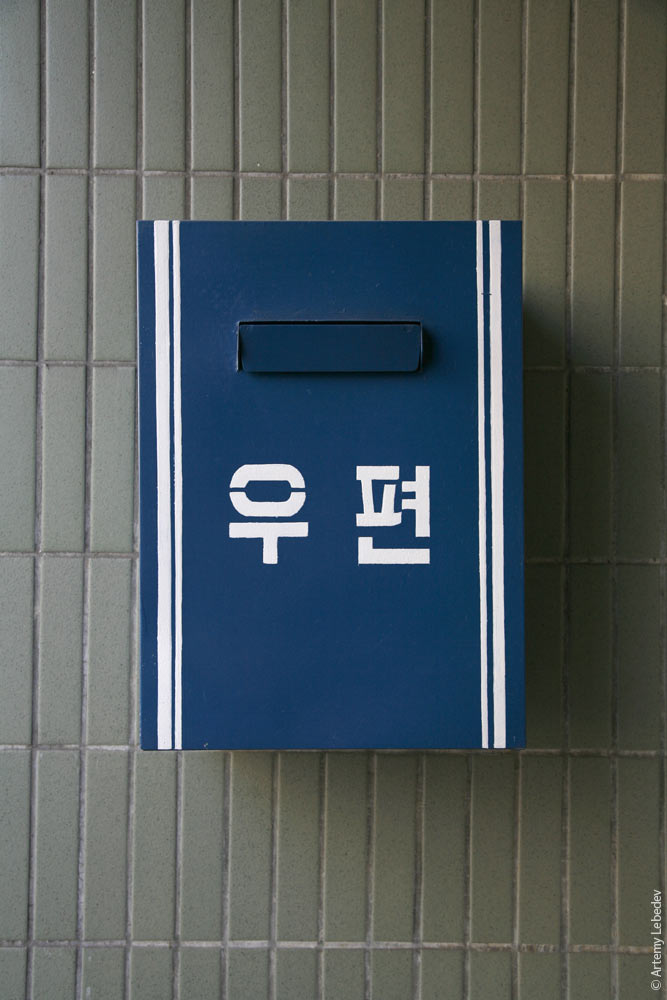 Every indoor location—whether it’s a home or place of work—must have portraits of the leaders hung up on the walls. 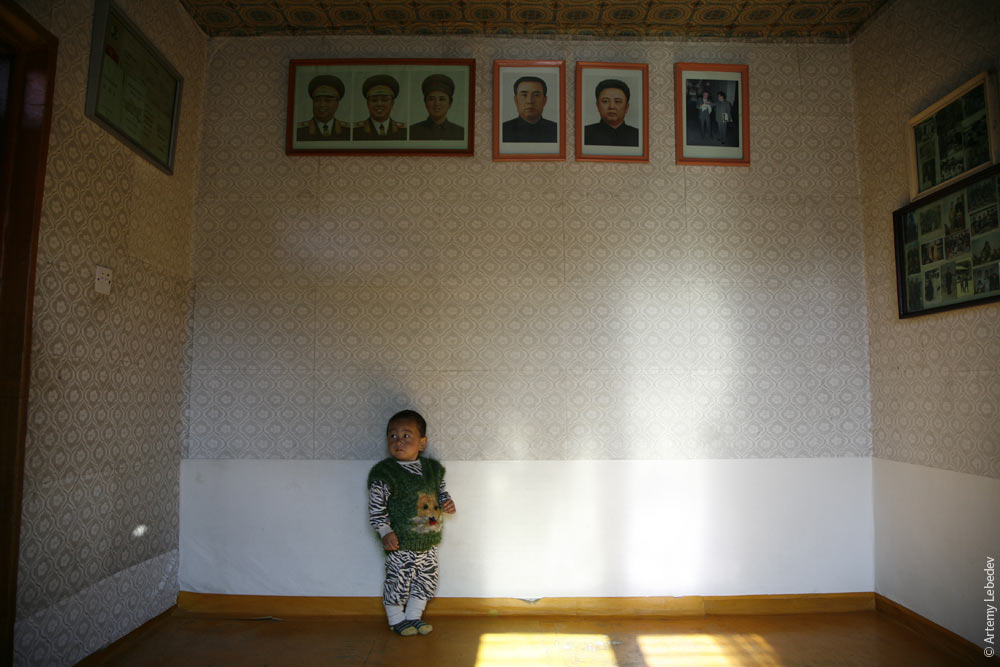 And every subway car as well. 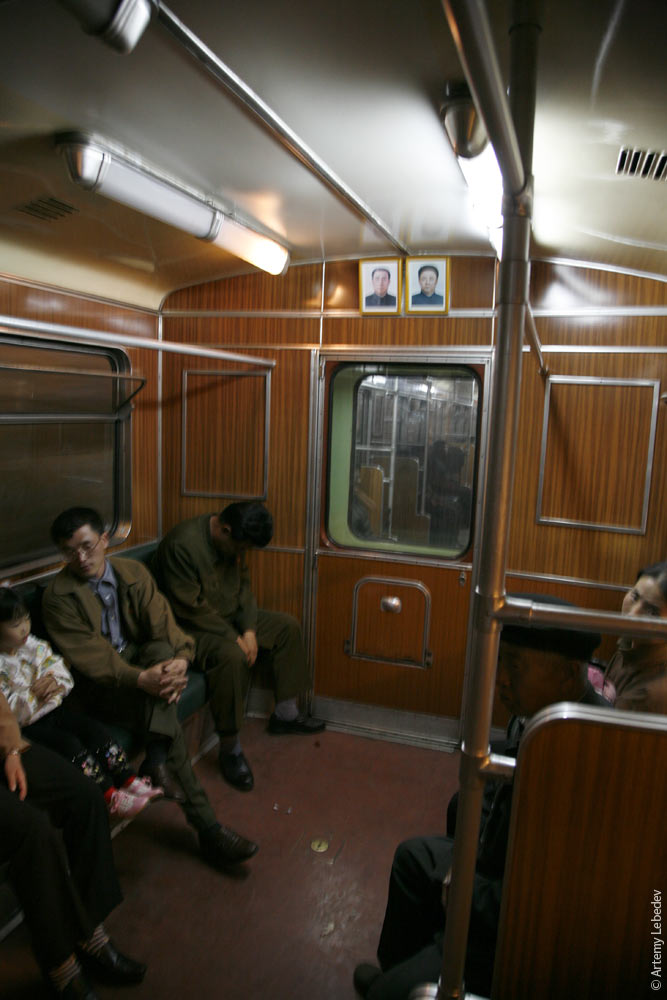 A concert program, presumably polished to perfection over the course of many years, is put on at the flashy Palace of Pioneers. In the finale, two choirs of Young Pioneers float in from the left and right, the orchestra stands up, all the performers come out onto the stage, and an image of Dear Leader Kim Jong-il appears on the screen. The foreigners are ecstatic. 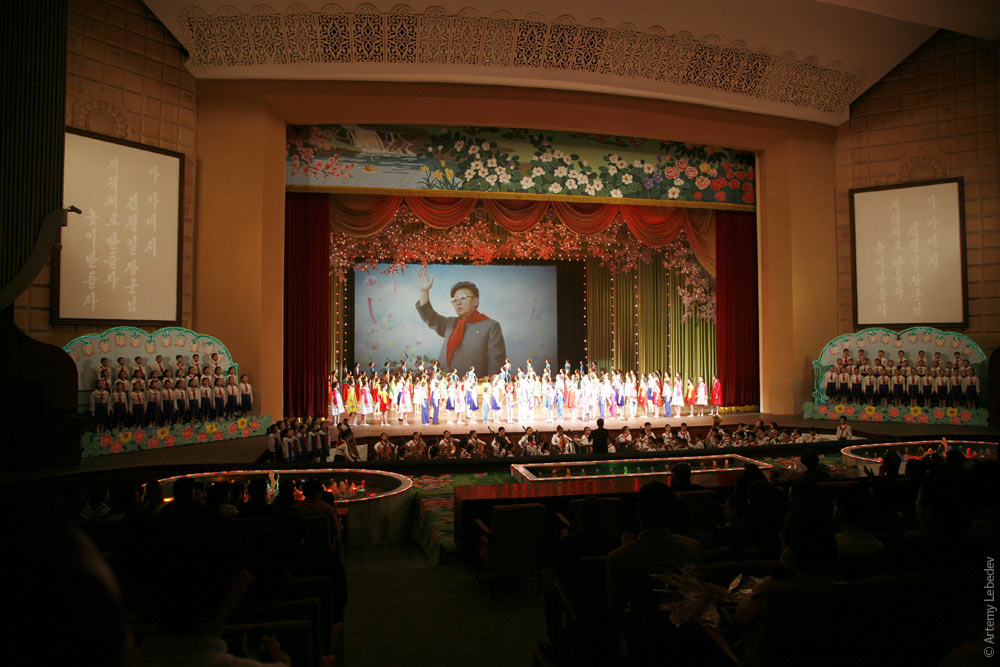 |